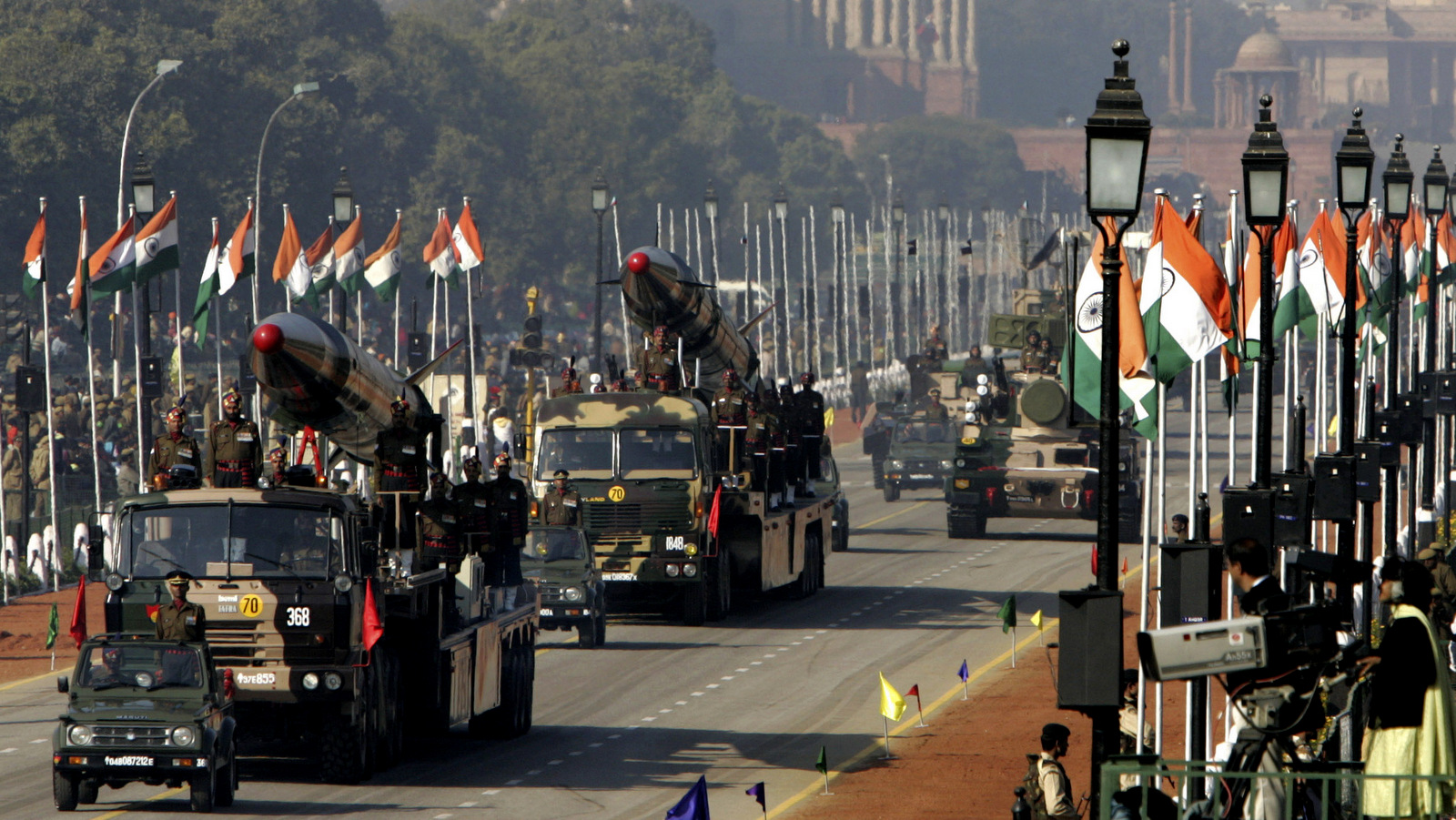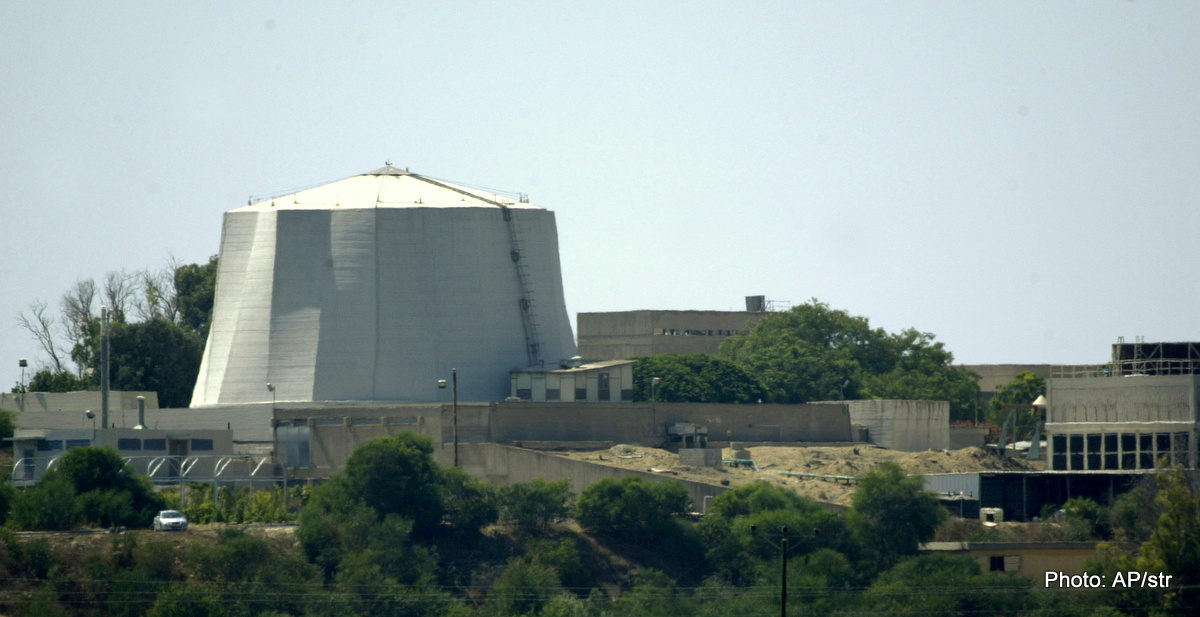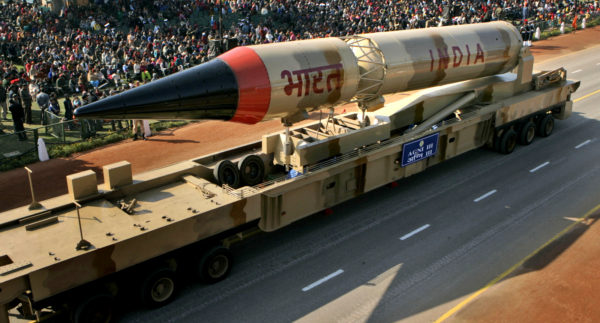As the Defense Intelligence Agency’s “Global Nuclear Landscape” report demonstrates, the U.S.’ highly selective concern regarding nuclear stockpiles is not about the danger they pose to the international community but rather the danger they pose to fulfilling U.S. geopolitical objectives.
WASHINGTON – A recent report created by the Defense Intelligence Agency (DIA) at the behest of the Senate Armed Services Committee sought to provide an overview of “foreign nuclear weapons-related capabilities.” However, that report, compiled using purely open-source information instead of DIA intel, focuses on only three of the world’s nine nuclear powers – Russia, China and North Korea – all of which happen to form part of the Trump administration’s new “axis of evil.” The report also makes mention of Iran, Libya, and Syria – also “rogue” states at odds with American foreign policy — even though none of these countries currently possess nuclear weapons.
While the report’s focus on “enemy” nations is unsurprising, what is surprising is the complete lack of attention given to any of the five other foreign nuclear powers that were not mentioned in the report: Pakistan, India, Israel, the United Kingdom, and France. The likely reason for their omission from the report is the fact that all of these countries are staunch U.S. allies — save for Pakistan, whose alliance with the U.S. has recently faltered.
However, the omission of India, Israel and Pakistan from the report is nevertheless astonishing, given that all three are remarkably close to major military confrontations, making their nuclear programs just as – if not more – concerning than those of the U.S.’ adversaries. This is especially true given that the countries named in the report either have no nuclear program or have vowed to only use the weapons defensively in order to ensure the continuity of their respective regimes.
India and Pakistan

Since their division into separate countries in 1947, India and Pakistan have been embroiled in border disputes — particularly over the Muslim-majority region of Kashmir, where Indian occupation of the territory is believed to have caused 70,000 deaths between 1989 and 2011. These and other disputes have led the two nations to go to war four times since they were separated, with many analysts speculating that another major conflict between India and Pakistan is just around the corner.
However, unlike in past Indo-Pakistani wars, both India and Pakistan have become nuclear powers. According to the estimates of the Arms Control Association, each country possesses between 120 and 140 nuclear warheads. Other estimates have suggested that Pakistan has significantly outpaced India in terms of its nuclear stockpile, while a 2015 report suggested that Pakistan could have as many as 350 nuclear warheads by 2020.
Yet more troubling is the fact that Pakistan, like the U.S., has consistently refused to reject a first-strike using nuclear weapons, owing to India’s superiority in terms of conventional warfare. The threat of a first nuclear strike launched against India by Pakistan is not unprecedented given that Pakistan has launched preemptive conventional attacks against India in the past — such as “Operation Chengiz Khan,” which provoked the Indo-Pakistani War of 1971 — and had reportedly developed a nuclear “first-strike” plan targeting India as early as 1998, the same year it first tested its nuclear weapons. A nuclear first-strike and the nuclear exchange that would surely follow poses great risk to the region as well as the planet.
Indeed, were nuclear war to break out between India and Pakistan, it could have a devastating global impact. Recent studies have estimated that a regional exchange of relatively small nuclear weapons would be sufficient to cause a decades-long “nuclear winter” that would wipe out modern agriculture and threaten the entire human species. Nonetheless, the DIA chose not to include these two nuclear powers in its recent report, despite the warning of an imminent conflict between them.
Israel

In addition to omitting India’s and Pakistan’s nuclear programs, the DIA report also failed to mention Israel’s nuclear stockpile, the only such stockpile in the Middle East. Though the omission may be due to the fact that Israel has never officially admitted to having nuclear weapons – a policy known as “nuclear ambiguity” — they are widely known to exist, with most estimates placing the total at around 80 nuclear warheads. In addition to being the region’s only nuclear power, Israel is also the only country in the Middle East to not have signed the Treaty on the Non-Proliferation of Nuclear Weapons (NPT).
Because it has not signed the NPT and has not openly declared its stockpile or nuclear doctrine, Israel is free to continue amassing nuclear weapons and to launch a first-strike against would-be adversaries. While some Israeli media outlets have called for a “preemptive nuclear strike” against Iran, others have argued that Israel’s nuclear arsenal allows it to launch aggressive, non-nuclear attacks against other nations, with a greatly reduced risk of a counterattack due to the likelihood of a nuclear reprisal.
Israel’s nuclear stockpile and its ambiguous nuclear doctrine are of major concern right now as Israel is currently preparing for a major war on “three fronts” — Lebanon, Syria and Palestine. Such a conflict will likely end up involving Iran, in light of mutual defense pacts between Iran and Syria as well as Iranian support for Lebanon’s Hezbollah. Were Israel to get backed into a corner – as it was by Hezbollah in 2006 – it could be tempted to use its nuclear weapons to quickly gain the upper hand, but not without triggering devastating consequences. By one estimate, an Israeli nuclear strike against Tehran – Iran’s capital – could kill 7 million people, 86 percent of the Iranian population
A self-serving concern
As the DIA report demonstrates, the U.S.’ highly selective concern regarding nuclear stockpiles is not about the danger they pose to the international community but rather the danger they pose to fulfilling U.S. geopolitical objectives. This is particularly unsettling as two of the nuclear powers not mentioned in the report have never ruled out the likelihood of a nuclear first-strike, a dangerous position that mirrors the U.S.’ own nuclear doctrine. By ignoring the only nuclear-armed countries that have threatened to use nuclear weapons in a first-strike, the DIA’s report on the “Global Nuclear Landscape” offers a lopsided and self-serving version of the global threat posed by nuclear weapons.
Source: www.mintpressnews.com




